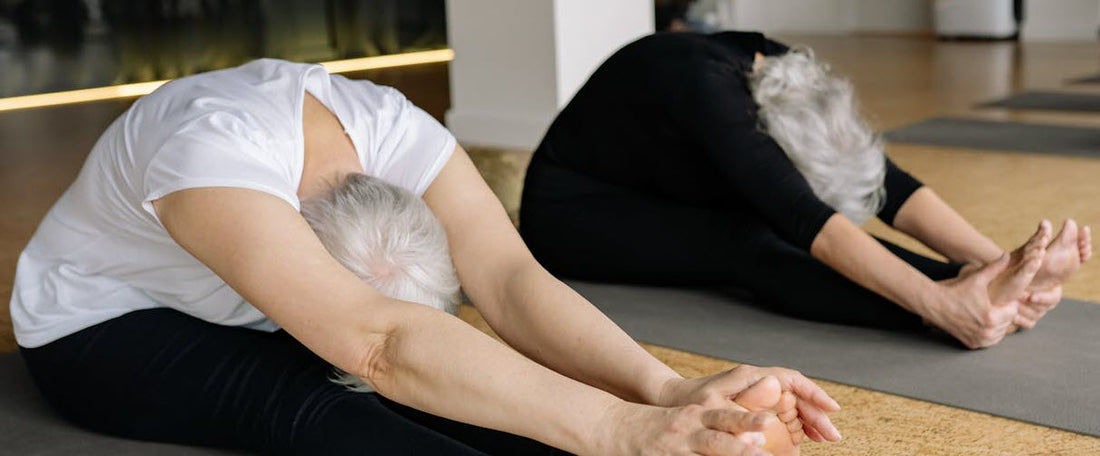
Managing Joint Pain and Mobility Issues: Exercise Tips for Older Adults
As we age, joint pain and mobility issues can become more prevalent, making it challenging to stay active. However, regular exercise is crucial for maintaining overall health, improving mobility, and managing pain. The key is to choose the right exercises and approach your fitness routine with care. Here’s a guide to help you manage joint pain and mobility issues while staying active in your 50s and beyond.
Understanding Joint Pain and Mobility Issues
Joint pain, often caused by conditions like osteoarthritis or rheumatoid arthritis, can make movement difficult and uncomfortable. Mobility issues, which can stem from muscle weakness, stiffness, or past injuries, may limit your range of motion. Despite these challenges, staying active is one of the best ways to manage symptoms and improve joint health.
Low-Impact Exercises for Joint Health
Low-impact exercises are ideal for those with joint pain and mobility issues. These activities reduce the stress on your joints while still providing the benefits of regular exercise.
- Walking: Walking is a simple, low-impact exercise that can be done almost anywhere. It helps maintain cardiovascular health, strengthens muscles, and improves joint flexibility.
- Swimming and Water Aerobics: Exercising in water reduces the impact on your joints while providing resistance that strengthens muscles. Swimming or participating in water aerobics can improve mobility, flexibility, and endurance.
- Cycling: Cycling, whether on a stationary bike or outdoors, is another low-impact exercise that strengthens leg muscles and supports joint health without excessive strain.
- Yoga and Stretching: Yoga combines gentle stretching with strength-building poses, helping to improve flexibility, balance, and joint health. Focus on poses that are easy on the joints, such as child’s pose, cat-cow, and gentle forward bends.
Strength Training for Joint Support
Strengthening the muscles around your joints can help reduce pain and improve mobility. Focus on exercises that target key muscle groups without overloading the joints.
- Resistance Bands: Using resistance bands is an excellent way to strengthen muscles while minimizing joint strain. Exercises like leg presses, seated rows, and bicep curls with resistance bands can be particularly effective.
- Bodyweight Exercises: Simple bodyweight exercises, such as wall sits, modified push-ups, and chair squats, can help build strength in a controlled manner. Ensure you’re using proper form to avoid unnecessary stress on your joints.
- Light Weightlifting: Incorporating light weights into your routine can help build muscle mass and support joint stability. Start with lighter weights and gradually increase as your strength improves, focusing on controlled movements.
Flexibility and Mobility Exercises
Maintaining flexibility is crucial for managing joint pain and enhancing mobility. Regular stretching and mobility exercises can help you stay limber and reduce stiffness.
- Gentle Stretching: Incorporate daily stretching into your routine to maintain flexibility and reduce stiffness. Focus on stretches that target areas where you experience the most discomfort, such as your hips, knees, or shoulders.
- Tai Chi: Tai Chi is a gentle form of exercise that improves flexibility, balance, and overall mobility. Its slow, controlled movements are easy on the joints and can help reduce pain.
- Foam Rolling: Using a foam roller can help release tension in tight muscles and improve mobility. Focus on rolling out the muscles surrounding your joints, such as the calves, quadriceps, and hamstrings.
Listening to Your Body and Modifying Exercises
It’s essential to listen to your body and modify exercises as needed. If an exercise causes pain, stop and assess whether you need to adjust your form or try a different activity. Incorporating rest days into your routine is also crucial for allowing your body to recover and prevent overuse injuries.
Seeking Professional Guidance
If you’re unsure where to start or have significant joint pain or mobility issues, consider seeking advice from a healthcare provider or a certified fitness professional. They can help you create a tailored exercise plan that addresses your specific needs and limitations.
Conclusion
Managing joint pain and mobility issues doesn’t mean giving up on fitness. With the right approach, you can stay active, improve your joint health, and enhance your overall quality of life. Focus on low-impact exercises, strength training, flexibility work, and most importantly, listen to your body. Every step you take towards staying active is a step towards better health and well-being.
References and Additional Resource
- Arthritis Foundation - Offers extensive resources on managing arthritis through exercise and lifestyle changes: Arthritis.org
- National Institute on Aging - Provides guidelines and tips for staying active as you age: NIA Exercise and Physical Activity
- American College of Rheumatology - Information on joint health, arthritis management, and recommended exercises: Rheumatology.org
- Mayo Clinic - Advice on how to exercise with joint pain and arthritis: Mayo Clinic - Exercise and Arthritis
- Tai Chi for Arthritis - A specialized program designed to improve joint health and mobility: Tai Chi for Health Institute
